Publishing a shapefile¶
This tutorial walks through the steps of publishing a Shapefile with GeoServer.
Note
This tutorial assumes that GeoServer is running at http://localhost:8080/geoserver.
Data preparation¶
First let’s gather the data that we’ll be publishing.
Download the file
nyc_roads.zip. This archive contains a shapefile of roads from New York City that will be used in this tutorial.Unzip the
nyc_roads.zipinto a new directory namednyc_roads. The archive contains the following four files:nyc_roads.shp nyc_roads.shx nyc_roads.dbf nyc_roads.prj
Move the
nyc_roadsdirectory into<GEOSERVER_DATA_DIR>/data, where<GEOSERVER_DATA_DIR>is the root of the GeoServer data directory. If no changes were made to the GeoServer file structure then the path isgeoserver/data_dir/data/nyc_roads.
Creating a new workspace¶
The next step is to create a workspace for the shapefile. A workspace is a container used to group similar layers together.
Note
This step is optional if you’d like to use an existing workspace. Usually, a workspace is created for each project, which can include stores and layers that are related to each other.
In a web browser, navigate to
http://localhost:8080/geoserver.Log into GeoServer as described in the Logging In section.
Navigate to .
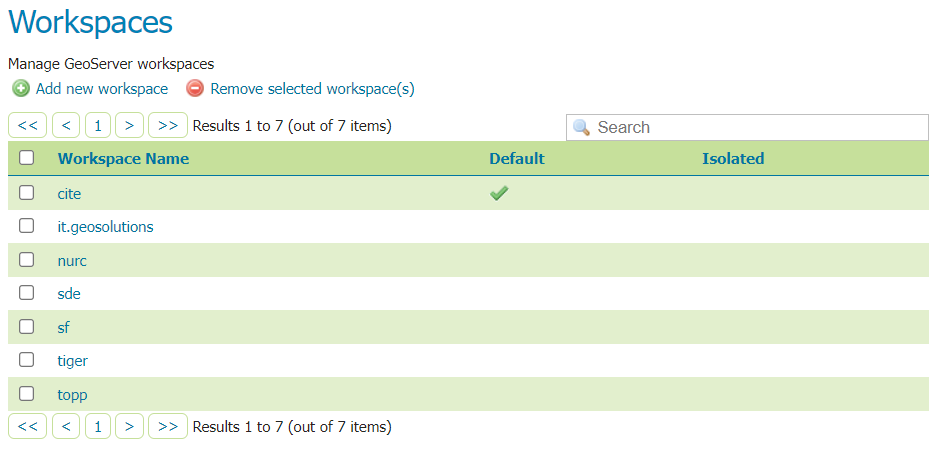
Workspaces page¶
Click the Add new workspace button.
You will be prompted to enter a workspace Name and Namespace URI.

Configure a new workspace¶
Enter the Name as
nycand the Namespace URI ashttp://geoserver.org/nyc.Note
A workspace name is an identifier describing your project. It must not exceed ten characters or contain spaces. A Namespace URI (Uniform Resource Identifier) can usually be a URL associated with your project with an added trailing identifier indicating the workspace. The Namespace URI filed does not need to resolve to an actual valid web address.
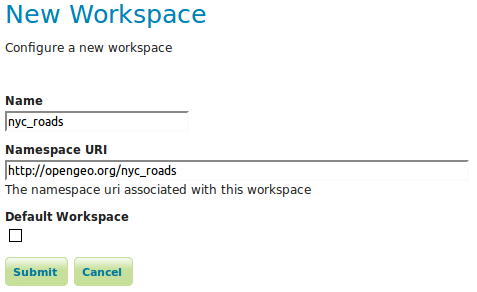
nyc workspace¶
Click the Submit button. The
nycworkspace will be added to the Workspaces list.
Create a store¶
Once the workspace is created we are ready to add a new store. The store tells GeoServer how to connect to the shapefile.
Navigate to .
You should see a list of stores, including the type of store and the workspace that the store belongs to.
In order to add the shapefile, you need to create a new store. Click the Add new Store button. You will be redirected to a list of the data sources supported by GeoServer. Note that the data sources are extensible, so your list may look slightly different.
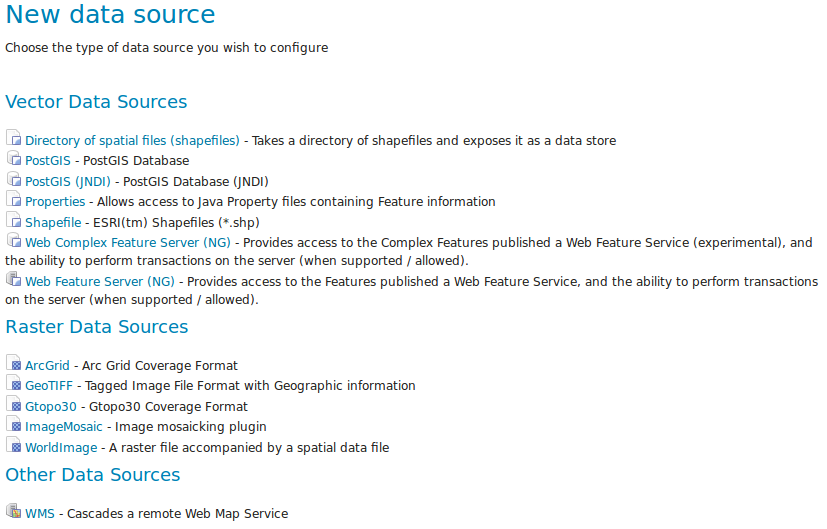
Stores¶
Click Shapefile. The New Vector Data Source page will display.
Begin by configuring the Basic Store Info.
Select the workspace
nycfrom the drop down menu.Enter the Data Source Name as
NYC RoadsEnter a brief Description (such as “Roads in New York City”).
Under Connection Parameters, browse to the location URL of the shapefile, typically
nyc_roads/nyc_roads.shp.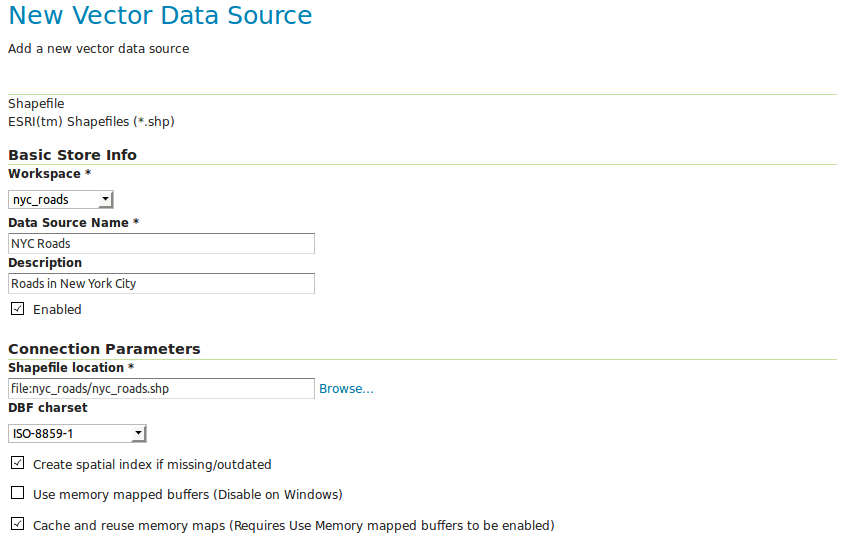
Basic Store Info and Connection Parameters¶
Click Save. You will be redirected to the New Layer page in order to configure the
nyc_roadslayer.
Creating a layer¶
Now that the store is loaded, we can publish the layer.
On the New Layer page, click Publish beside the
nyc_roadslayer name.
New layer¶
The Edit Layer page defines the data and publishing parameters for a layer. Enter a short Title and an Abstract for the
nyc_roadslayer.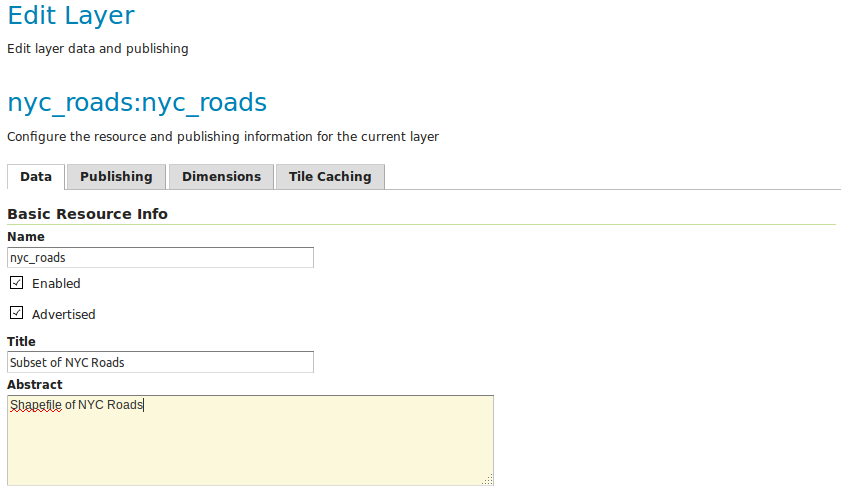
Basic Resource Information¶
Generate the layer’s bounding boxes by clicking the Compute from data and then Compute from native bounds links.

Generating bounding boxes¶
Click the Publishing tab at the top of the page.
We can set the layer’s style here. Under WMS Settings, ensure that the Default Style is set to line.

Select Default Style¶
Finalize the layer configuration by scrolling to the bottom of the page and clicking Save.
Previewing the layer¶
In order to verify that the nyc_roads layer is published correctly, we can preview the layer.
Navigate to the Layer Preview screen and find the
nyc:nyc_roadslayer.
Layer Preview¶
Click the OpenLayers link in the Common Formats column.
An OpenLayers map will load in a new tab and display the shapefile data with the default line style. You can use this preview map to zoom and pan around the dataset, as well as display the attributes of features.

Preview map of nyc_roads¶